Are Solid Wood Cribs a Better Choice?
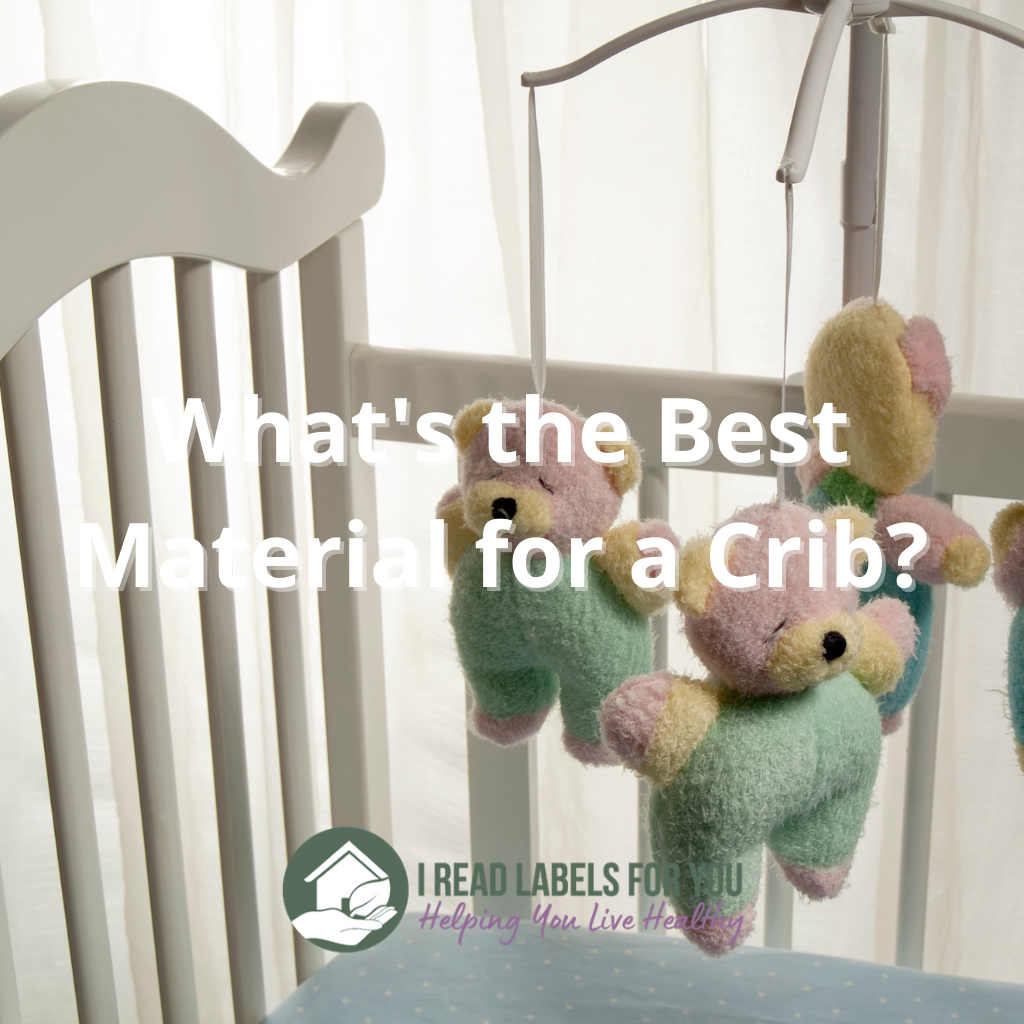
When I was a little girl, I dreamt of having a crib for my toy doll. I remember my excitement when my parents gave me one – a carved rocking cradle made of pink plastic. It was so pretty that I wished it would magically turn into a real size crib for me. Well, what passes as a toy, won’t pass as a real deal. Regardless of how pretty the crib is, I would never buy a plastic bed for my child. Fortunately, there are many crib options on the market today. In this post, you will not only learn how to buy a non-toxic crib. You will also find out whether solid wood cribs are better than others. Also, keep reading to see which wood crib is my favorite.
How to buy a non-toxic crib
If you are shopping for a crib, you probably have lots of questions. Several years ago I shopped for a crib for my son, so I know what it is like. Just like many parents, I wanted to do everything right. But I did not find much help on the Internet or from my friends. Eventually, my frustration lead me to giving up my career in finance for the sake of researching safe baby products. In the end, research turned into my full-time occupation. Hence, I am here to help you get the peace of mind about making the right decisions for your family.
Now, let’s address some questions you may have about baby cribs.
How do you know if a crib is truly non-toxic?
To begin with, no government agency has a definition for the term “non-toxic.” In addition, there is no law that would prohibit a crib manufacturer from calling their cribs non-toxic, no matter what they are made of. In other words, it is not a legally regulated term and is virtually meaningless. It seems that some manufacturers use the term just as a marketing tool.
Also, my research of hundreds of cribs, including solid wood cribs, led me to the following discovery. Sometimes manufacturers use this term simply to mean that the amount of lead agrees with the latest government regulations. While this is laudable, don’t they all have to comply with the latest government regulations?
Thus, to buy a truly non-toxic crib, it is necessary to look behind the marketing claims. Also, it is important to ask manufacturers the types of questions set forth herein.
What does “CPSC and/or ASTM compliant” mean?
To start with, CPSC stands for U.S. Consumer Product Safety Commission and ASTM stands for American Society for Testing and Materials.
With the exception of lead and phthalates, both the CPSC and the ASTM focus on crib structural safety. That is to say, they do not focus on safety from the standpoint of harmful chemicals that can be found in wood finish, wood composites, and glue. Instead, they want to make sure that cribs won’t injure or even kill babies.
Therefore, on the one hand, it is great if a crib is compliant with CPSC and ASTM International standards. On the other hand, CPSC/ASTM compliance does not automatically mean that the crib you consider buying is non-toxic. Read on to see if the same is true for solid wood cribs.
New safety requirements for cribs
In fact, the latest regulations, 16 CFR 1223 (for full-sized cribs) and 16 CFR 1220 (for non-full-sized cribs), adopted on December 6, 2013, have been a big improvement (source). To clarify, these new safety requirements resulted from infant deaths caused by cribs with drop-down sides.
(And yes, we had a fear that our son would die of sudden infant death syndrome. Fortunately, he survived those years just fine, and now we are in the sweet spot between that and his qualifying for a driver’s license. Yikes. You will get through it, too, but it is right to read about the crib structural safety. This is one area where you want to do your homework. Perhaps, it is best to buy the latest model up to the latest government codes which take into account the latest research.)
Is a non-toxic crib completely free of lead?
Well, you may have heard that lead in paint has been banned. And you may have concluded that lead is no longer something to worry about, especially in solid wood cribs. However, this is not entirely true.
To clarify, the Federal Consumer Product Safety Improvement Act of 2008 (CPSIA) lowered the permissible concentration of lead in paint from 0.06 percent (600 ppm) to the new limit of 0.009 percent (90 ppm), effective August 14, 2009 (source). Thus, if you decide to get a used crib, get one with the issue date after August 14, 2009. And again, our best advice is to buy a new one – this year’s model – not a used one.
Additionally, occasionally we hear about lead in toys, kids’ furniture, and cribs, which come from abroad. For example, in May of 2015, the Consumer Product Safety Commission recalled Baby’s Dream cribs and furniture manufactured in Chile between March 2014 and March 2015 due to the violation of lead paint standards.
Consequently, try to make sure that the furniture you consider buying follows the current standards. How can you do that? Call and ask the manufacturer. Even though there is no guarantee that you will get a straight answer, you will let the manufacturer know that consumers care about these issues. And if you get an evasive answer, you can draw your own conclusion about purchasing their product.
Why does a non-toxic crib smell?
Unless you are standing before unfinished solid wood cribs, chances are the cribs you are looking at smell of chemicals. This is because of volatile organic compounds (VOCs). They are a large group of toxic chemicals such as acetone, benzene, ethylene glycol, formaldehyde, and methylene chloride. In fact, all of them easily evaporate at room temperature in a process known as “off-gassing.”
Nonetheless, with the exception of formaldehyde, there are no helpful regulations regarding VOCs in nursery furniture. To specify, VOCs can be in a crib’s lacquer, paint, glue, and/or its composite wood. Moreover, exposure to high levels of VOCs can cause a whole array of symptoms like eye, nose and throat irritation. Additionally, VOCs may cause headaches, nausea, vomiting, and dizziness. Above all, exposure to VOCs may lead to worsening of asthma, cancer, and liver, kidney, and central nervous system damage.
However, scientists have not determined what amount constitutes a “safe” dose of VOCs. Neither have they studied the impact of combinations of chemicals on our health, coming from multiple sources of VOCs. You will find out in a bit if solid wood cribs can emit VOCs, too.
It is important to note that babies are more vulnerable to VOCs because they need more air per body weight. That is to say, an infant takes 40-60 breaths per minute, whereas a healthy adult breathes 12-16 times a minute.
Greenguard certification
To avoid exposure to VOCs, ask whether the non-toxic crib has received Greenguard Gold certification.
Greenguard is a company that was acquired by UL Environment (a division of Underwriters Laboratories) in 2011.
Without a doubt, Greenguard certification helps manufacturers create and helps buyers identify products and materials used inside homes and buildings that have low chemical emissions, improving the quality of the air in which the products are used.
Additionally, the UL Environment laboratory uses state-of-the-art equipment to determine total volatile organic compounds. It also sometimes tests for individual VOCs following the two standards: Greenguard Certified and a stricter Greenguard Gold standard (formerly known as “Greenguard Children & Schools”).
Are solid wood cribs better than others?
Just as before, let’s look at some questions that may arise when you shop for a wood baby crib.
How important is it to buy solid wood cribs?
To answer this question, let’s look at how non-solid wood cribs are made. Specifically, they are made of engineered or composite wood. Namely, plywood, medium-density fiberboard (MDF) or particleboard, are common materials made by gluing small pieces of wood together. As you can imagine, it takes a lot of glue to do it. And glue usually contains formaldehyde, which does not sound like it belongs in a non-toxic crib.
So, what do we know about formaldehyde?
The International Agency for Research on Cancer (IARC) has classified formaldehyde as “carcinogenic to humans.” They based it on nose and throat cancers in working populations. For more information about formaldehyde, visit here.
It is true that the amount of formaldehyde in a baby crib would be small in comparison to occupational exposure. However, we must remember that babies are more vulnerable to VOCs because they need more air per body weight. Therefore, to be on the safe side, I recommend solid wood cribs or cribs with low formaldehyde emissions.
What is CARB II certification?
To begin with, California determined that formaldehyde is a potent toxin in 1992. Hence, the California Air Resource Board (CARB) is a department of the California Environmental Protection Agency that regulates formaldehyde emissions in composite wood.
Further, the California Environmental Protection Agency has recently come up with a stricter standard, called CARB II, which sets forth the following limits on formaldehyde emissions.
First, for hardwood plywood veneer core the standard prohibits formaldehyde in amounts greater than 0.05 parts per million (“ppm”). The same is true for hardwood plywood composite core.
Second, for particleboard, it is 0.09 ppm.
Third, for medium density fiberboard (MDF), it is 0.11 ppm.
Often manufacturers use plywood or MDF to make mattress supports in cribs and the bottoms of dresser drawers (source). Therefore, please always double-check with the seller if their non-toxic crib is 100% solid wood. Also, remember to check the mattress support and dresser drawers.
Is CARB II good enough?
When it comes to non-solid wood cribs, there is a better standard – Greenguard, which we discussed above.
For example, the formaldehyde emission limit for Greenguard Certified is 0.05 ppm. It is the same as CARB II’s for plywood veneer core and hardwood plywood composite core. Yet, it is better than CARB II’s requirement for particleboard (0.09 ppm), and MDF (0.11 ppm). The Greenguard Gold standard’s limit is only 0.0075 ppm.
As you can see, for cribs, CARB II is not the strictest standard. Thus, it is best to look for either a solid wood crib or Greenguard Gold-certified crib.
As a matter of fact, you can search for any product in the Greenguard database to learn if it has been certified here. In addition to formaldehyde, Greenguard tests for VOCs, and you can learn more about its standards here.
Are solid wood cribs very expensive?
Frankly speaking, a non-toxic crib made of wood will most likely be costly, but not always.
Over the years, I have looked into tons of cribs sold on the US market. Generally, solid wood is more expensive than pressed wood. On the other hand, I have also seen very expensive cribs that were not solid wood cribs.
My favorite option for a non-toxic solid wood crib
I am really excited about the non-toxic crib brand Green Cradle for several reasons.
First, they make nursery furniture by hand in the USA.
Second, all their furniture and cribs are from 100% solid wood.
Additionally, instead of paint, they use natural linseed oil for the furniture finish.
Moreover, their wood cribs are convertible. It means you can transform your crib into a bed when your child grows up. Isn’t it great that you don’t have to throw away the crib and look for another bed?
Above all, I appreciate the fact that Green Cradle wood cribs are made in the USA, namely in Southern California. Undoubtedly, foreign manufacturing locations, such as China, offer less expensive cribs and furniture. For example, some Million Dollar Baby cribs are much more budget-friendly but their manufacturing location is China. My fear is that the Million Dollar Baby company might not be in full charge of the manufacturing or quality control process. Thus, there might be deviations from their standards. In addition, the finish of Million Dollar Baby cribs is low VOCs, not zero VOCs.
Finally, to learn more about Green Cradle safe cribs, please visit the Green Cradle website.
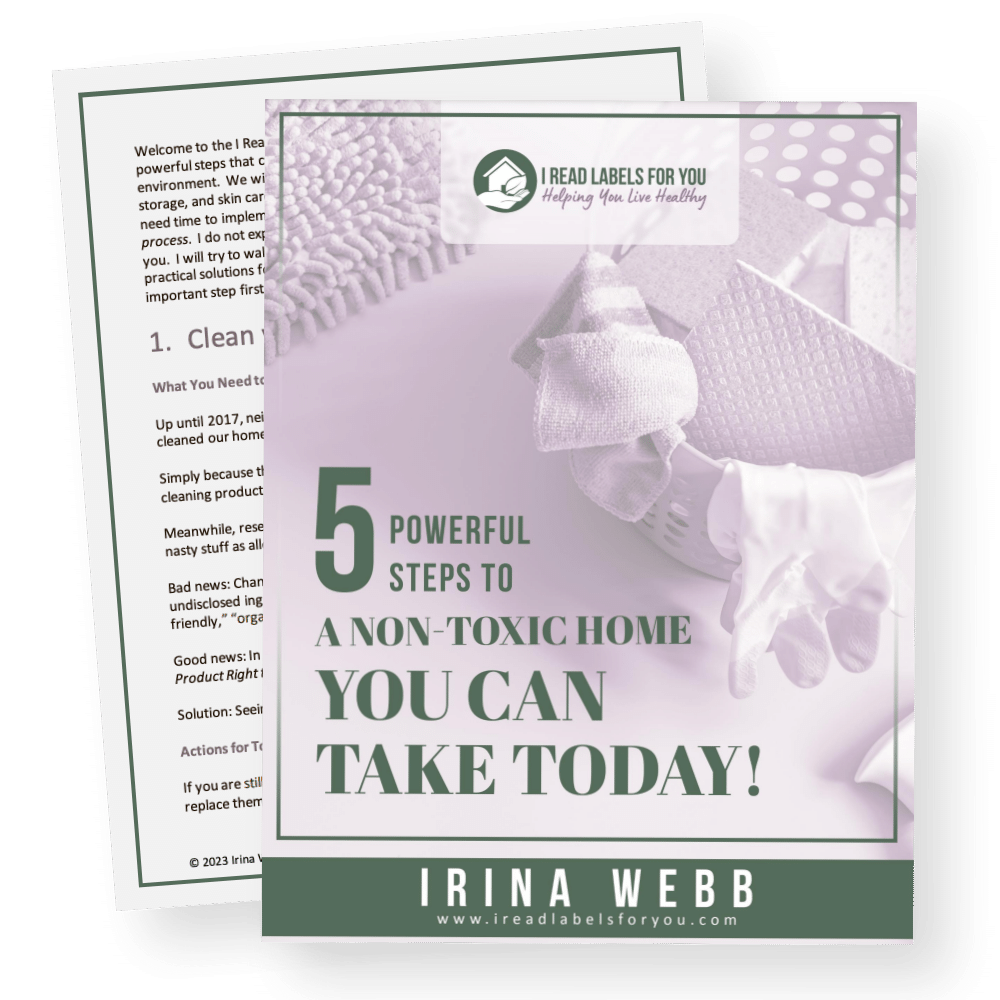
Download The Free Guide!
5 Powerful Steps To A Non-Toxic Home
Join our informed consumer community and get our free guide the “5 Powerful Steps To A Non-Toxic Home”.

 Written by
Written by 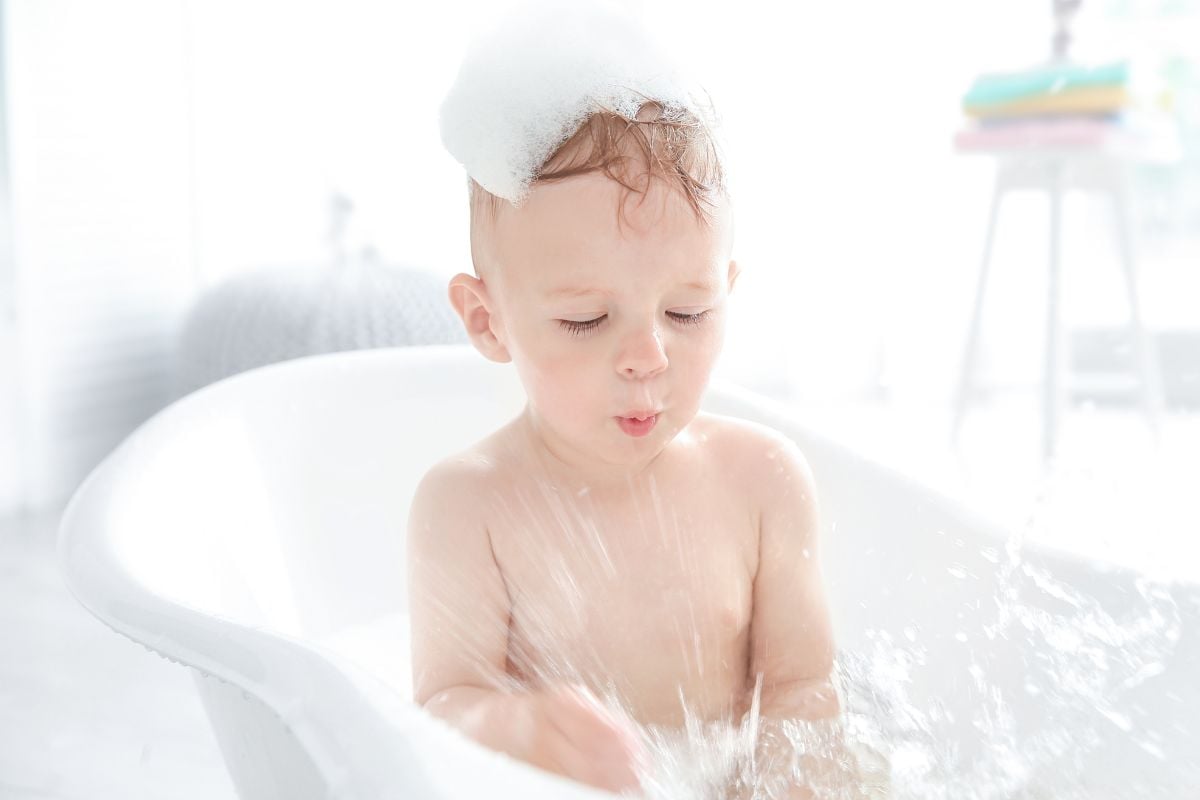
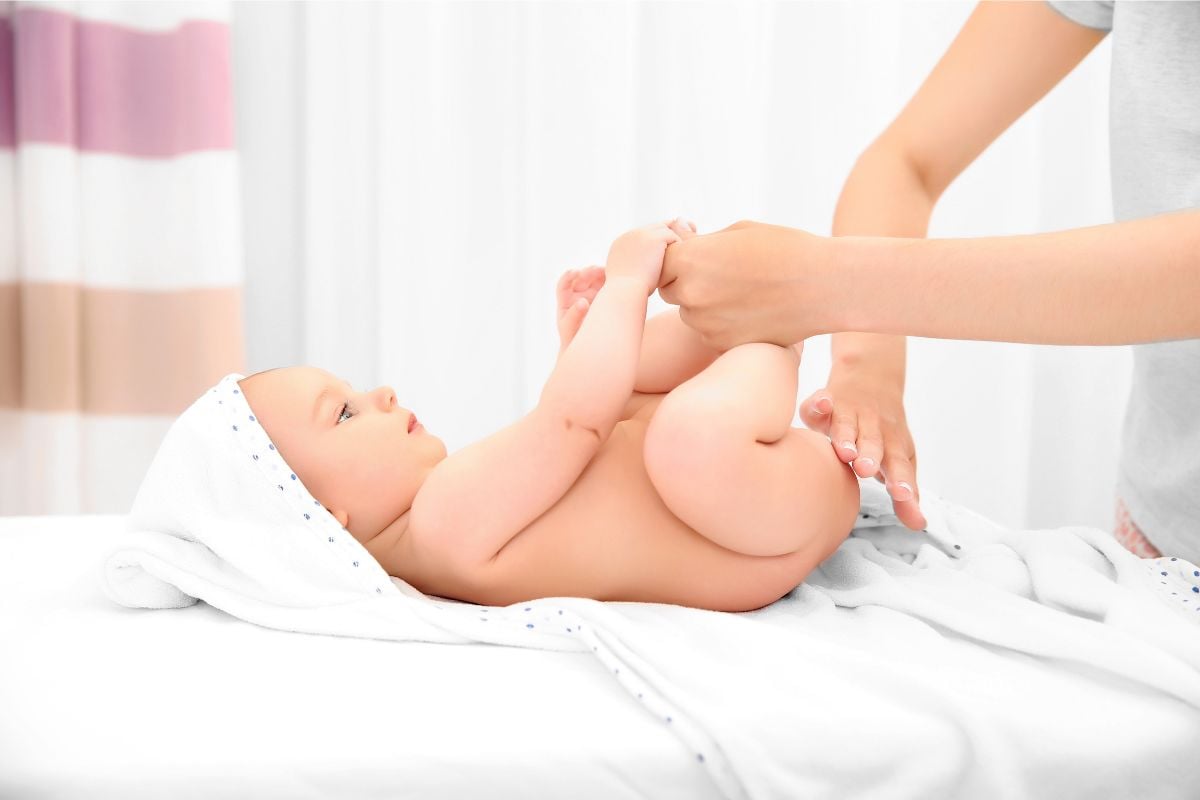
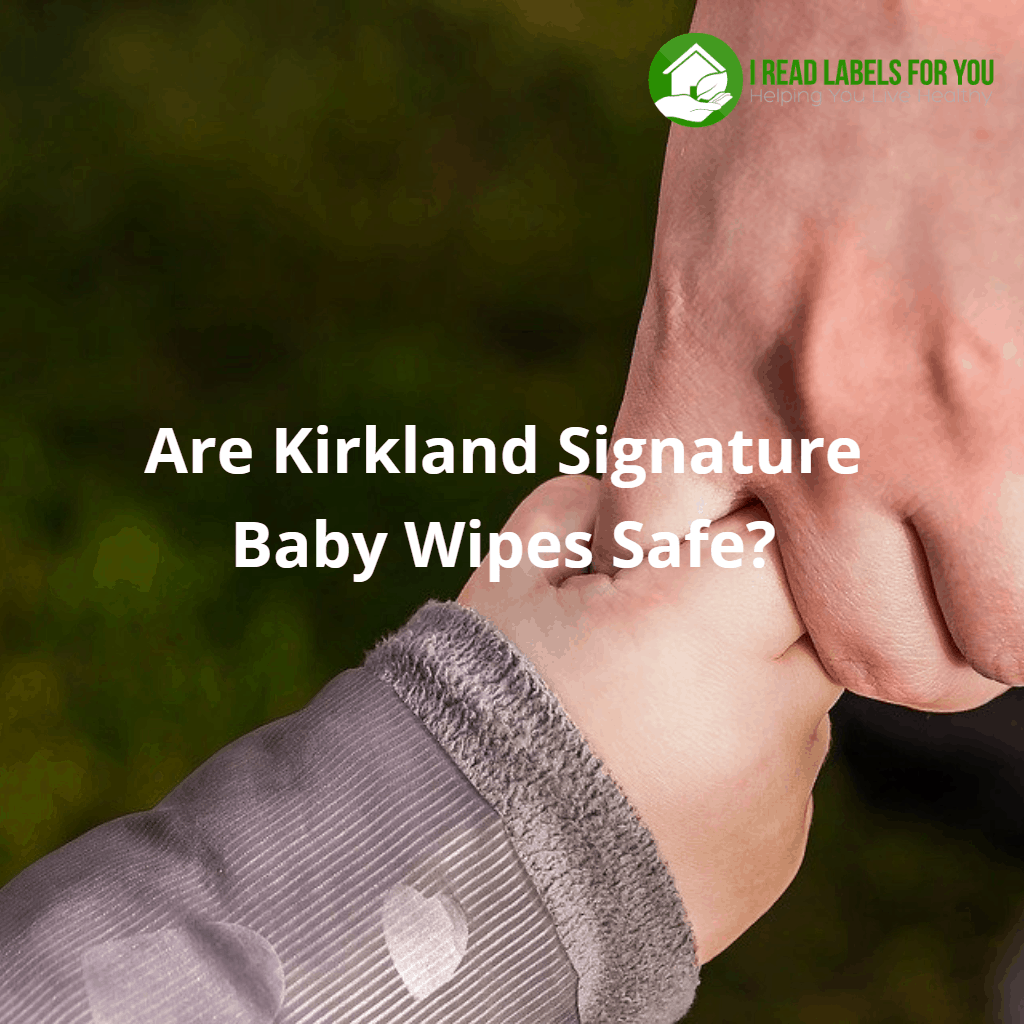
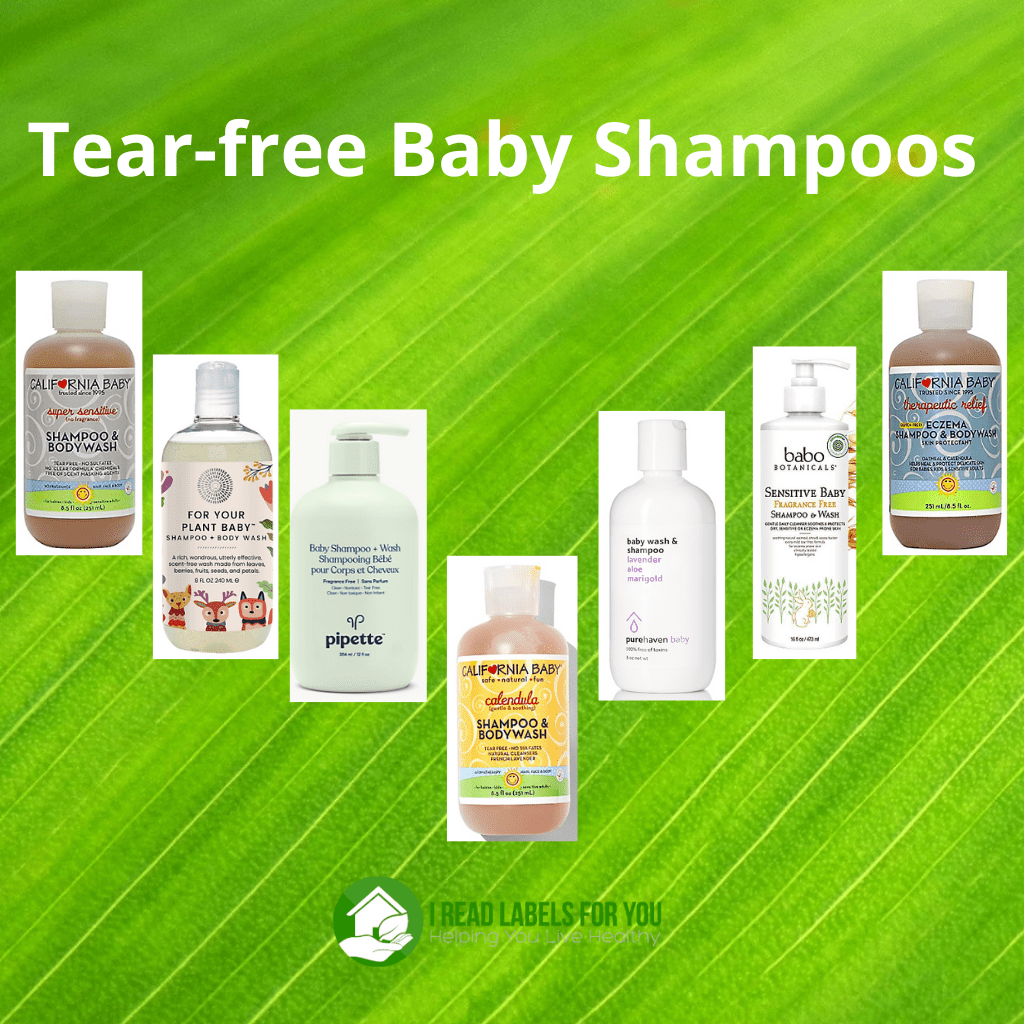
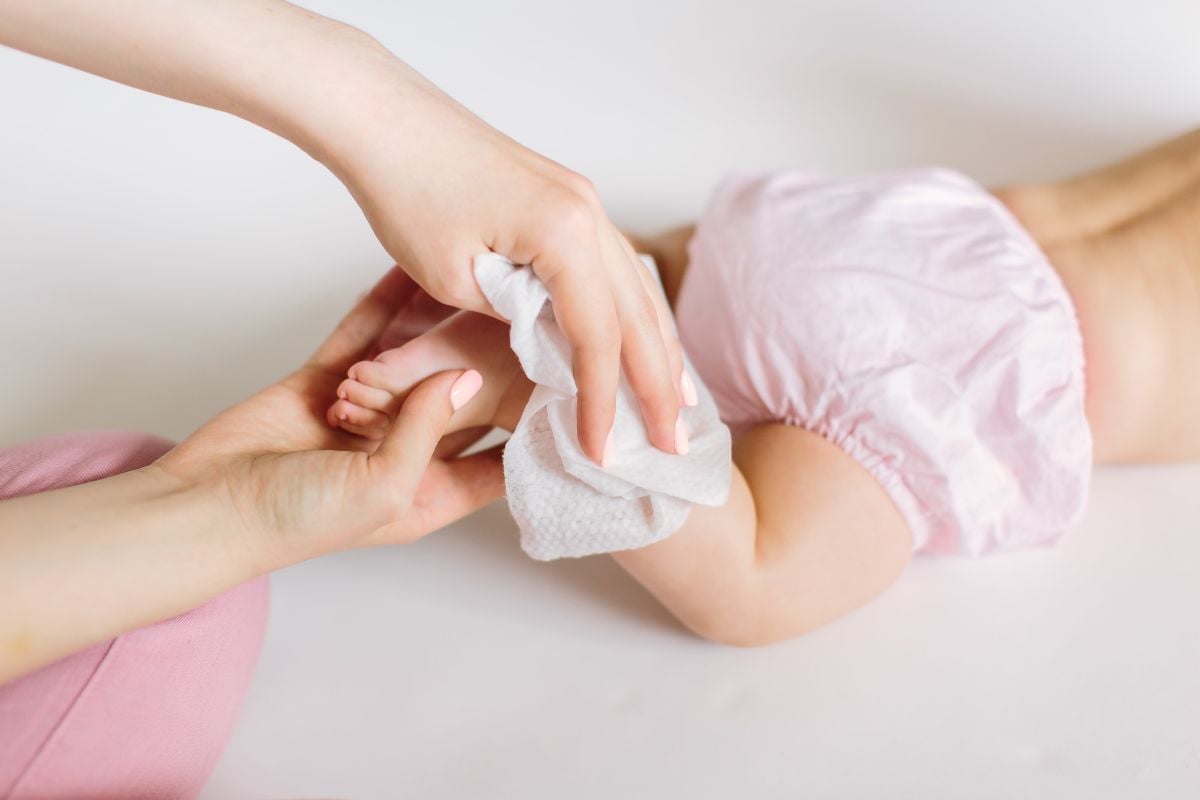
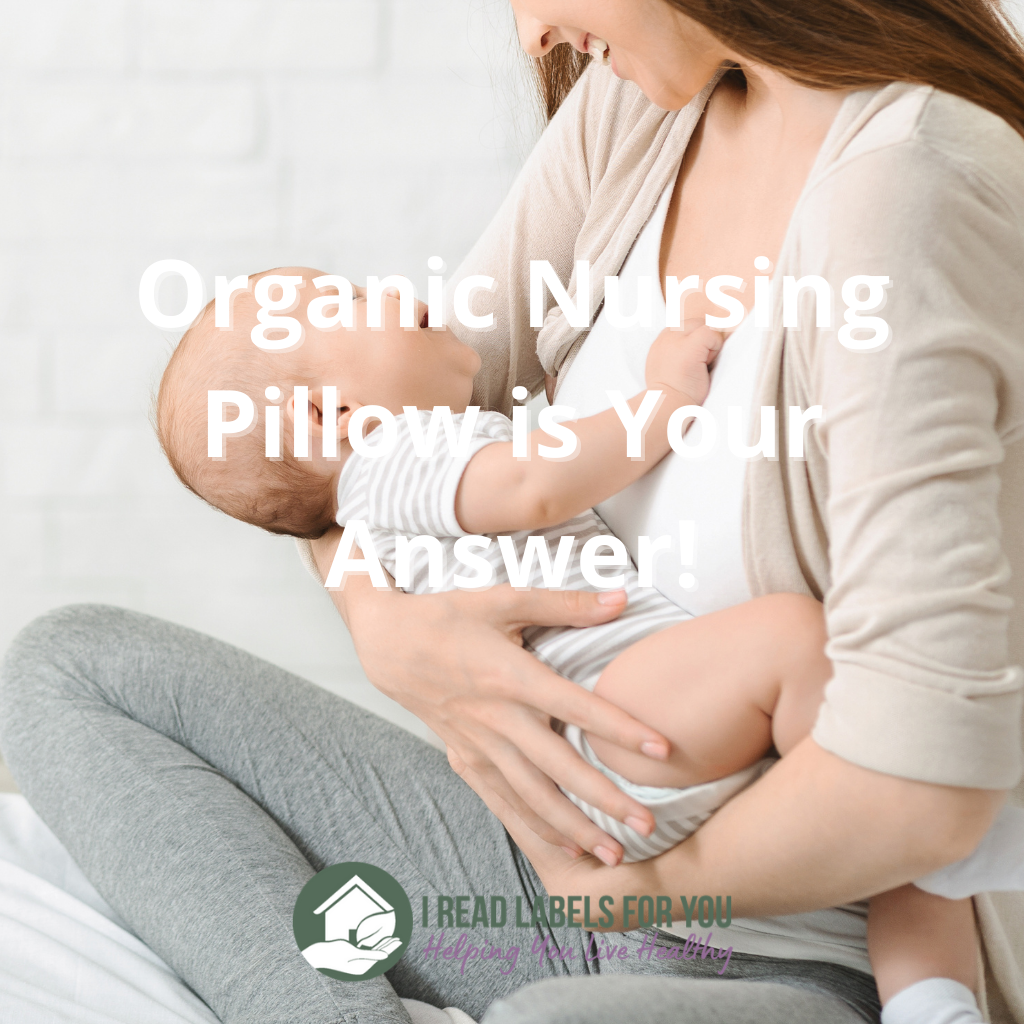
Hi Irina?
What do you think about The Wave Crib from Nestig. The crib is “constructed from sustainably harvested solid Brazilian Pine.”
Thank you!
Hi, Maryam! We appreciate your interest and trust! If you want to know the details that are not described in the post, you are more than welcome to book a consultation with Irina: https://ireadlabelsforyou.com/services/
Hi Irina,
After TONS of research, I found a completely non-toxic crib, dresser, changing table and nightstand (Romina furniture)! We’ve had them for a year now and absolutely love them! Their furniture is truly the highest heirloom quality and completely safe.
Thank you for the suggestion, Mackenzie! We will consider looking into it.
Hi Irina! Thanks for such a helpful article. What are your thoughts on an iron crib? I’ve only been able to find one that is Greenguard Gold Certified but it is rather expensive. My thought is that even if an iron crib doesn’t have GG Certification, the only two concerns would be (1) toxicity in the paint/finish and (2) if the mattress support is made of something other than solid wood. Do you think that’s a fair assumption? I’d like to reach out to the companies with metal cribs that are in my price range but am unsure about what specific questions to ask to obtain the information I need to move forward. Do you have any suggestions? Thank you so much!
Hi, Ainslie: I do not think I like iron for cribs. It seems to be such as an unforgiving and cold (temperature-wise) material. I would be afraid that my child would hurt himself. A wool bumper would need to be used. And those are very expensive. And also if you have EMF issue in your house, iron cribs would probably make it worse. That would need to be investigated. ~Irina
Hi Irina,
What you do takes a great deal of time, effort and dedication, so thank you for that. I would love it if you could write an e-book on non-toxic furniture in general. I’d be first one to buy it. I’ve been searching high and low for some non-toxic and affordable furniture (specifically, for a sofa/sectional and some furniture for my toddler’s room), but I run into some sneaky or just cost-prohibitive stuff (i.e. $6,000-$7,000 for the sofa is a bit too pricey for me). I believe you reported buying a Cisco Brothers sofa some time ago. Does it have coils and what is your opinion on coils (acting as antennas) in sofas? Also, what is your opinion of the ‘The Futon Shop’ furniture? Just a bought a bed from them for my son, but now i am worrying that the linseed oil they use as finish might not be the true boiled linseed oil without heavy metal driers… Appreciate your feedback! Tatiana
Hi, Tatiana: The Cisco Brother model of sectional that we own does not have coils. It is pricey but we love it, and it will last a lifetime. You can get a discount if you buy it through Rowena Finegan of the Pine Street Natural Interiors. We have coils in our mattresses though. I did a very extensive research on the issue including hiring specialists with EMF measuring devices. In short, coils do not act as antennas. However, they may increase electric fields that are already present in the house, especially if your bed is close to electrical outlets. We turn off circuit breakers at night. I can’t speak about the Futon Shop. I would have to revisit them. And I can do that, and answer all your other questions in a phone consultation: https://ireadlabelsforyou.com/pick-brain-product/ ~Irina
Hello,
I came across this blog after extensive research for non-toxic cribs. I’m assuming that it’s possible there may be newer models since I am reading these articles 2 years after the research.
I am curious as to the most budget friendly option for non-toxic cribs for 2017. I’ve noted that some companies have some of the models as Greenguard certified, while other models not having it. Is it safe to assume that any crib being “Greenguard” would be to acceptable non-toxicity standards?
I looked at Green Cradle and they look perfect, however, I cannot afford the $1200+ price for the crib alone.
Does anyone recommend the cribs from Land of Nod? Again, expensive. I am more interested in seeing if the other less expensive cribs are recommended (Da Vinci, Nest Crib, Baby Mod, Million Dollar Baby). If one is better than others, what one?
Thanks
-Kristen
Yes, I agree Green Cradle cribs are pricey. Every year I research cribs and come up with 10 best options: https://ireadlabelsforyou.com/10-best-non-toxic-cribs-ebook/ Let me know what you think. ~Irina
Kristen, if you are not in a position to pay, I understand. There is more free information about cribs on the website including comments. ~Irina
Hi,
This blog says you wish you knew about this crib. Which crib did you purchase?
Thanks.
Unfortunately, we bought that crib before I knew how to do product research. You can find a complete list of cribs I recommend in my ebook. ~Irina
Ikea has an unfinished wood crib called the singlar. Coat it in some mineral oil and it’s ready to go. It does use a board to hold up the mattress, but for 79.99 you can just air it out really good and top it with a good mattress.
Thanks or checking with them to confirm!
Hi Irina, many thanks for your quick reply. I will buy your e-book, without a doubt. Are you writing another article where these two cribs will be included? If so, when? Since I am very keen to make this purchase soon! Thanks so much!
The information is already in the ebook.
Thanks Irina, I bought your ebook which contains very useful information, also about the cribs I had mentioned before. Many thanks. One question please regarding the IKEA Singlar crib, do you know if they use any glue which contains formaldehyde or if it is 100% formaldehyde free? This crib almost seems too good to be true!
Singlar crib used to have mattress support made of pressed wood certified to CARB II. Now it is all 100% solid wood. Because the crib has to be assembled, I do not believe much glue used in the construction if any. I sent them a message to confirm that. Thank you for asking! It is a great question! Oh, and the “catch” is that not much wood is used to make the crib. So it is flimsy looking. But some of my followers bought it and they like it.
Hi Irina, did you get an answer about the glue? I inquired but the person I spoke to didn’t know. Thank you!
Hi Cara! Could you please clarify your question?
I really love reading your webpage with all this interesting info. Thank you! I know this article is already over two years old but I am currently searching for a non-toxic crib for our first baby and I came across the Nest Crib by Room and Board http://www.roomandboard.com/catalog/kids/cribs-and-changing-trays/nest-crib/241220?articleNumber=241220&CHAR_241220_NEST_COLL_WOOD=WHT
and the Baby Mod Modena crib seen on the Walmart page http://www.walmart.com/ip/Baby-Mod-Modena-3-in-1-Fixed-Side-Crib-Choose-Your-Finish/15529737.
I would really appreciate hearing your opinion. Many thanks!
Hi, Katharina! You will hear my opinion about these cribs, and you will find a wealth of information and tools in my e-book. I highly recommend you buy while the introductory rate lasts. ~Happy to help, Irina
Hi Irina,
I have spent hours researching trying to find a safe and non-toxic crib as I am due soon with my first. I would be very interested in your e-book, but when I click on the link, it says the page is no longer available. Help please! Thanks!
Would you recommend the green cradle organic footprint crib innerspring mattress? I know you had previously recommended the naturepedic mattress but I noticed that it contains polyethylene and hydrated silica. The green cradle organic crib mattress seems like a good option but I could be missing something.
I’ve looked at footprint crib mattresses before and did not see anything concerning in them. It should be good. I confirmed with Naturepedic that their crib mattresses do not contain hydrated silica any more. As for polyethylene, I also prefer plastic-free mattress and Naturepedic carries non-waterproof mattresses. In fact, we have it and are very happy with it.
My husband and his father are building our baby’s crib and we bought boiled linseed oil as the wood finish, I was wondering if you had to put an additional varnish or finish overtop to protect the linseed oil or can we simply put 3 coats of linseed oil and it will last through the baby scratching or chewing on it?
Will the linseed oil yellow a lot after drying?
Hi, Tammy, this is very timely question because I found some products that would work great on a crib. Did you buy the linseed oil that I recommended on my site? The reason I am asking is that boiled linseed oil is generally made with lead containing drying agents. Please let me know which linseed you bought. Thanks.
I bought boiled linseed oil from home depot. We have not used it yet tho
Ironically they call linseed oil that was never boiled “boiled.” Instead, it has heavy metal dryers. Confusing terminology. I am glad you did you not use it yet. What is your time frame? I can publish a post on this with details and links to specific products I recommend. Make sure you are subscribed to the blog so you do not miss the post. Thanks.
My due date is in 2 weeks we were planning on applying the varnish tomorrow but not sure what would be the best choice for a clear safe varnish
I recommend Tried and True. They are sold on Amazon or hardwood stores. I do not know your location so I can’t recommend a place to buy them. I will change my schedule to publish a post that would be helpful to you. May I ask why you decided to buy unfinished crib and what crib it is? Alternatively, you can contact me privately for paid consultation. Again, I highly recommend staying away from linseed with lead in it. Lead is very toxic to pregnant women and infants and everybody else.
Thank you for all the information on finishing wood – well written and a great help.
$845 is entirely too much for a wooden crib built of wood subjected to a 1/3 of the manufacturing processes other woods are subjected to, IF that. That’s just greed.
The alarmist tone of the Green Cradle site was also deplorable. This from the site:
“CRIB DEATH”??? Really?? Classless! I will never reward these dirt bags with $850 for that kind of mean, crappy profiteering. Posting a floating list of facts in such a way that new parents might draw specious correlations to the product in question just so you can turn a buck is gutter level exploitation of the anxiety new, inexperienced mothers and fathers bear over the wellness of their newborns!
I was actually and seriously debating spending almost a grand on a flipping crib until I read that. Embarrassing.
And zeal is one thing, but if they were genuinely concerned about getting these cribs out to new parents in order to PREVENT CRIB DEATH they’d price their NON-LETHAL cribs more reasonably so that more babies could be SAVED(!!).
I hate immoderate capitalism.
It is also known as crib death. I hate you.
Solid wood pieces cost more money than the leftover scraps glued together to make plywood. If you know anything about real wood furniture, you know it’s always more expensive for better, bigger, more artistic pieces. You can think of it like diamonds, tiny little diamonds (cheap), tiny little diamonds made to look bigger by settings (cheap but more expensive), one big diamond (expensive). I’m guessing I know which one you bought your partner.
When I try to use the MSDS site, what should I be typing into the keywords? Names of products? Materials they list?
Also, were you able to find dressers that also fit these criteria?
MSDS site is a library of MSDS (material safety data sheet) forms with data regarding the properties of a particular substance. In the product keyword field, you can type any chemical you would like, e.g. sodium laureth sulfate. And if there are too many results, you can narrow them down by the name of a manufacturer. I hope it helps. Thank you for asking!